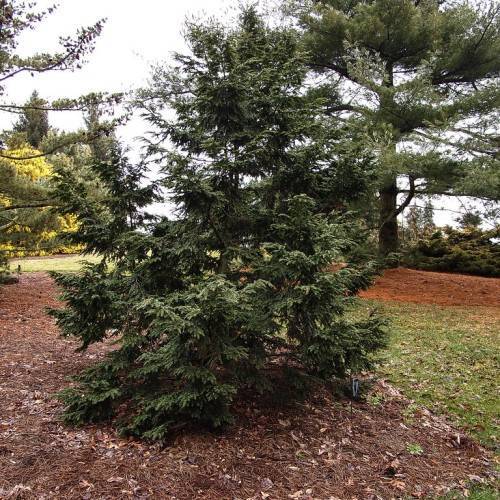
Canadian hemlock
Tsuga canadensis 'Geneva'
Also Known As - eastern hemlockCycle:
Perennial
Watering:
Average
Hardiness Zone:
3 - 7
Flowers:
Flowers In Spring
Sun:
Deep shade, Filtered shade, Full sun only if soil kept moist, Part sun/part shade
Soil:
Sandy Loamy Clay
Cones:
Yes
Leaf:
Yes
Growth Rate:
Moderate
Maintenance:
Low
Care Level:
Medium
watering
Canadian hemlock is a slow-growing species of evergreen conifer that thrives in moist, well-draining soils with regular watering. For best growth conditions, the optimal watering schedule for Canadian hemlock is once a week in spring and summer with up to 2 inches of water per week, and once every 2 weeks in fall and winter. Make sure that each watering session thoroughly saturates the soil down to a depth of at least 6 inches. Also, provide a good soaking if the soil is especially dry. During hot summer months, the plant may need more frequent watering or supplemental watering every few days.
sunlight
Canadian hemlock (Tsuga canadensis 'Geneva') requires approximately 6-8 hours of sunlight exposure each day during the growing season to thrive. Direct sunlight (unobstructed by trees or buildings) is best, though the tree can survive in partial or indirect shade. During the wintertime, the tree should be protected from the harsh midday sun and should not receive any direct sunlight. Generally, the tree will grow best in areas that receive an abundance of morning sunlight and afternoon shade.
pruning
Canadian hemlock (Tsuga canadensis 'Geneva') should be pruned twice – once in late winter and then again in early summer - to maintain a healthy and attractive appearance. Pruning in late winter should remove dead or damaged branches, clean up the overall shape of the shrub, and promote new growth. Pruning in early summer should focus on removing any lower branches that are interfering with walkways or other landscape features. If necessary, lateral branches can also be thinned at this time to promote airflow. When pruning, use sharp, clean tools and always cut as close to the live branch collar as possible.
